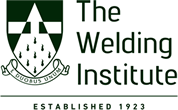- Home
- News / Insights
- Institute News
News
The Welding Institute Granta Park, Great Abington, Cambridge CB21 6AL, UK
|
Copyright © 2024 TWI Ltd. All rights reserved. |
The Welding Institute Granta Park, Great Abington, Cambridge CB21 6AL, UK
|
Copyright © 2024 TWI Ltd. All rights reserved. |
